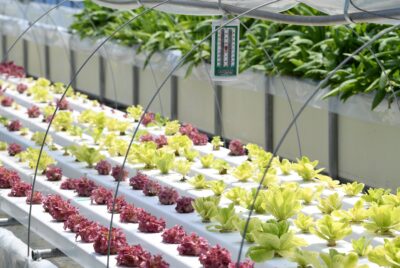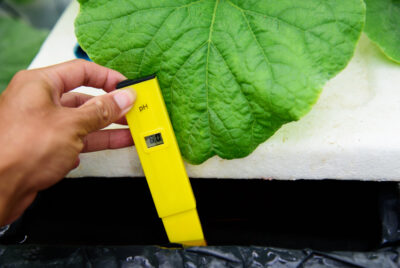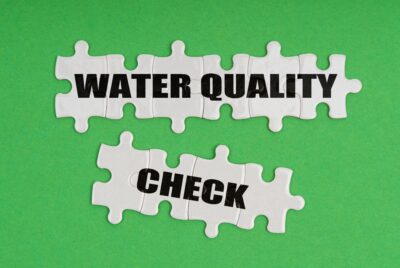Hydroponic Seedlings
We may earn a commision from purchases made using our links. Please see our disclosure to learn more.
A Beginner’s Guide To Hydroponic Seedlings.
I hope you are intrigued by the concept of hydroponic seedlings. Moreover, are you keen to explore this innovative method yourself? If so, let’s dive deep into the fascinating world of Seedlings. As an enthusiastic indoor hydroponic gardener myself, I’m thrilled to not only share my journey but also offer tips and suggestions.
So, what are Hydroponic Seedlings?
First and foremost, hydroponically raised sprouts are plants that germinate and begin their growth cycle in a water-based, nutrient-rich solution, instead of soil.
On the plus side, they often grow faster, use less space, and are less likely to be plagued by soil-borne diseases and pests.
On the downside, hydroponic systems can be more technical and initially more expensive than traditional gardening.
Diving into The Hydroponic Setup:
Mainly, Hydroponic systems require a reservoir, a growing medium, a pump, and grow lights. And guess what? Surprisingly, assembling your system isn’t as daunting as it might first appear! For instance, some systems, like a hydroponic planter, are fully self-contained and need only minimal setup.
When you’re Setting Up Your Hydroponic System: First, begin by setting up your reservoir and then attaching the pump. Subsequently, introduce your growing medium—this could range from coconut coir to rockwool—and then, voila, you’re good to go.
In terms of location, a well-lit, temperature-controlled area with easy access to electricity is your ideal choice.
Delving into Selecting the Right Seeds:
Regarding Seed Varieties: From lettuce to tomatoes, a plethora of seeds thrive in hydroponic systems. Interestingly, strawberries are among my favorites.
Speaking of hydro-grown juveniles: Certain seedlings, like leafy greens, herbs, and peppers, fare particularly well.
For Seed Prep: Initially, rinse your chosen seeds gently, then next, soak them in water for 24 hours.
Moving on to How to Germinate Seeds Hydroponically:
Before anything else, place your soaked seeds into the hydroponic growing medium and ensure you space them evenly.
During the Germination Process: It’s essential to maintain a steady temperature of around 68°F and guarantee your seeds get 16-18 hours of light daily.
Afterward, once your seedlings have sprouted, it’s vital to monitor their growth and adjust nutrient levels and light as necessary.
Looking at Hydroponic Fertilizer and Lighting for Water-cultivated Sprouts:
Fundamentally, your hydroponic seedlings need a balanced mix of macro and micronutrients. You can conveniently find hydroponic fertilizers at local garden stores or online.
When considering lighting, it’s pivotal in photosynthesis, essential for seedling growth. Among lighting options, LEDs stand out as the optimal choice due to their efficiency and spectrum.
Transitioning to Transplanting Water-based Plantlets:
As a guideline, it’s time to transplant when seedlings show a robust root system and a couple of true leaf sets.
During the Transplanting Process: Gently lift seedlings from their medium and settle them in their newsoilless home.
In the aftermath, closely monitor the plants after transplanting. Ensure they receive ample hydroponic fertilizer, light, and show no stress signs.
Addressing Troubleshooting Common Problems for Hydroponic Seedlings:
Regarding Water Issues: Monitor pH, oxygenation, and water temperature. Imbalances in these can stress your seedlings.
About Hydroponic Fertilizer Imbalances: Make it a habit to test your solution regularly for the correct balance.
On the topic of Pest and Disease Management: Although hydroponics reduces many concerns, it’s not foolproof. Prompt checks and actions can prevent issues.
Reflecting on Maintaining Your Hydroponic Garden:
For optimal results, monitor pH, hydroponic fertilizer balance, and water temperature using the correct hydroponic instruments and controllers.
Furthermore, cleaning your system regularly helps stave off issues like algae. Occasionally, as plants mature, you might need to adjust the lighting and nutrients.
Highlighting the Benefits of Hydroponic Gardening:
One notable aspect is efficiency. Hydroponics offers faster growth and a higher yield per square foot than traditional methods.
In terms of sustainability, it’s superior with less water usage, no soil erosion, or nutrient runoff.
Furthermore, hydroponically grown plants often exhibit better health, flavor, and nutritional value.
In conclusion
As you embark on your hydroponic journey, always remember that patience and perseverance are vital. It might seem technical initially, but the bounties are plentiful.
FAQ’s
Can you grow all types of seeds hydroponically?
Leafy greens, herbs, and certain vegetables like tomatoes and peppers do particularly well.
How long do hydro-grown juveniles take to germinate?
The germination time can vary depending on the type of seed. Generally, it can range from 24 hours to 7 days.
Do I need special equipment for hydroponic gardening?
You will need some specific equipment like a reservoir, pump, growing medium, and grow lights.
Can you transplant Hydroponic plants into the soil of an outdoor garden?
Yes, hydroponic plants can be transplanted into soil. However, while it might be tempting to relocate the plant quickly, it’s crucial and advisable to take care and ensure that you gradually acclimate the plant to its new environment.
What are the common problems in hydroponic gardening?
Common issues include pH imbalances, hydroponic fertilizer deficiencies, water temperature issues, and pests or diseases. Regular monitoring and tweaks can prevent most of these





Comments are closed.